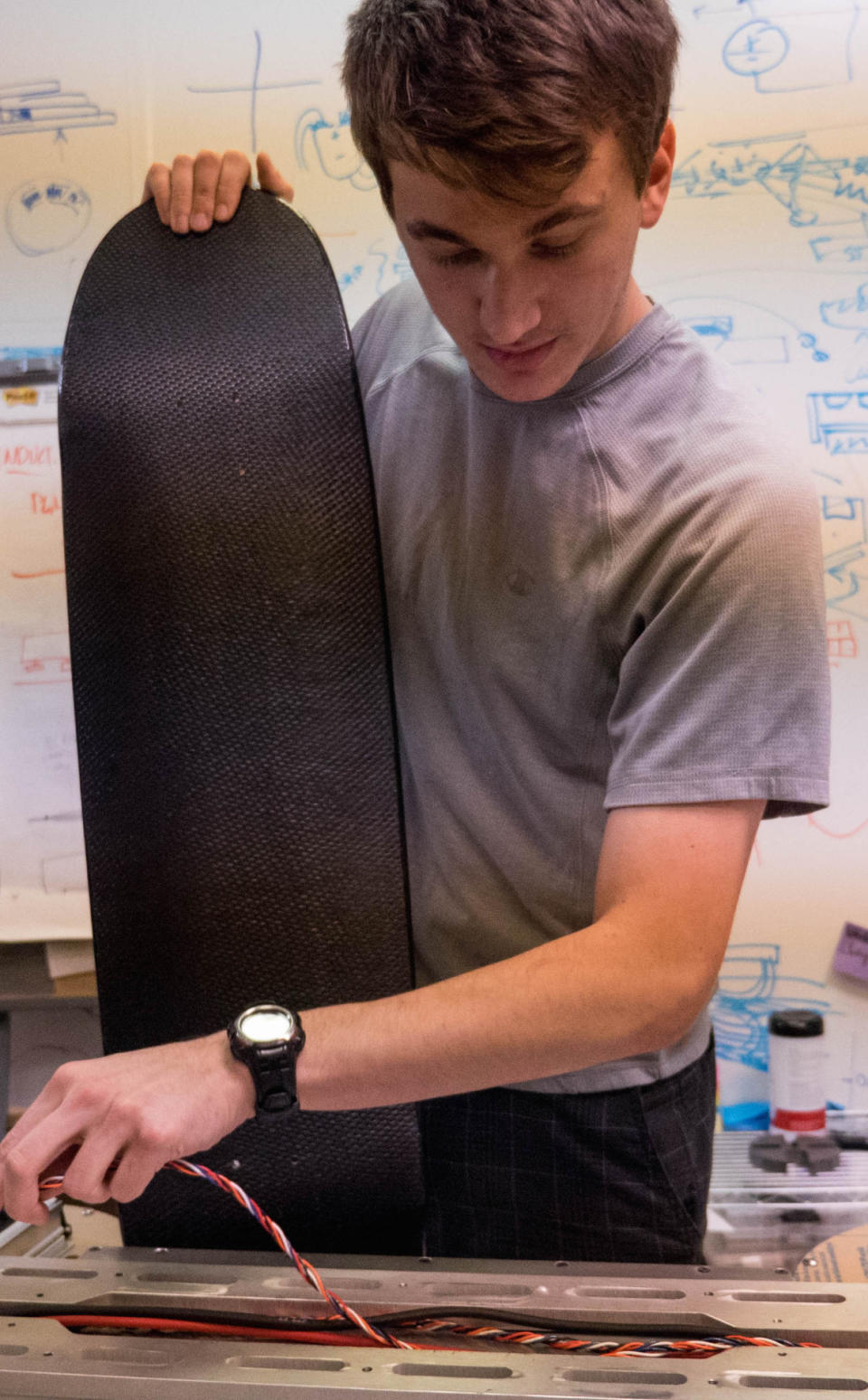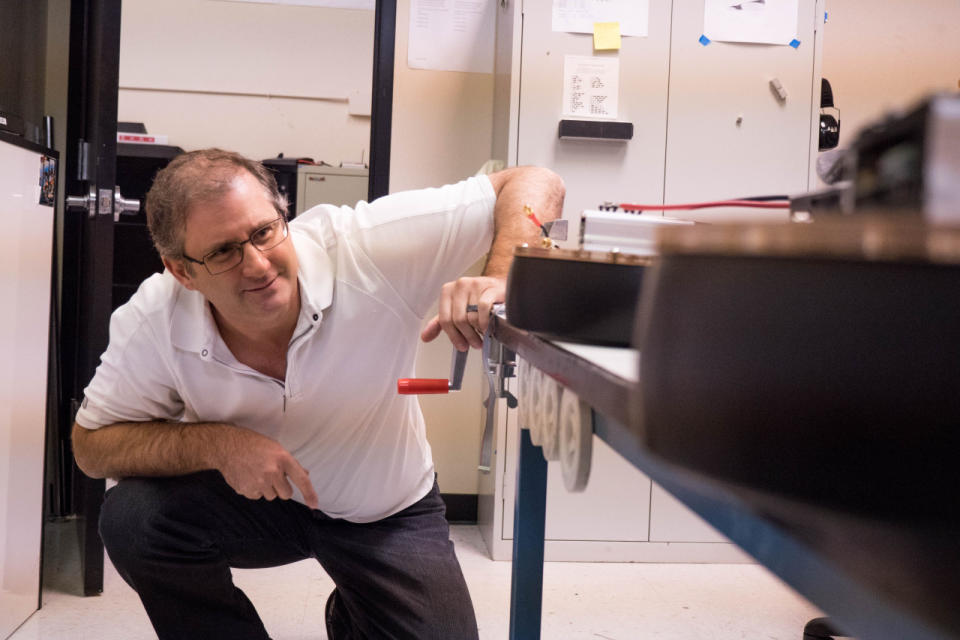Hendo Hoverboard 2.0: Sorry, Marty, You Can’t McFly Yet
Marty McFly fans who yearn to hitch a ride on a hoverboard may have to go even further back into the future before they get to float on air.
Last October, a Silicon Valley startup called Arx Pax made quite a splash when it demonstrated an honest-to-God working hoverboard called the Hendo. The prototype device used powerful magnets to create opposing energy fields in a copper floor, causing them to repel each other and lifting a rider as high as 8 inches into the air.
The author trying not to fall off the Hendo prototype at last October’s demo (Yahoo Tech).
The demo was the kickoff to a Kickstarter campaign that ultimately raised more than half a million dollars to develop the device. Of the campaign’s 3,169 backers, nine ponied up at least $10,000 apiece to receive the very first working models of the Hendo.
At the time, Arx Pax announced an ambitious goal of delivering a working model on October 21, 2015, the date the fictional McFly emerges in Back to the Future 2. Today the company announced it would unveil a new version of the board — the Hendo 2.0 — at a private event at its headquarters on that day. At the same event, the company plans to distribute beta versions to its biggest backers.

Aided by advice from skateboarding icon Tony Hawk, Arx Pax redesigned its original model significantly — shrinking the size of the deck to make it more like a regular skateboard, boosting the battery life and engine performance, improving the balance and controls, and more.
But whether the Hendo Hover 2.0 is anything more than just another well-timed publicity gimmick remains to be seen. At press time, the company was feverishly trying to build enough working units in time for the event. It declined to answer questions about whether the devices will be commercially available or what they might cost.
In an email, a company spokesperson stated:
“Arx Pax makes and sells hover engines for many applications, including industrial automation, structural isolation, transportation, and entertainment. We are not a hoverboard company per se. The hoverboard is a proof of concept that captures the imagination. We are in discussions with potential partners around the world about their plans to create commercial hoverboards and hover parks, and we’re excited by the level of interest we have received.”
Even then, there’s one rather glaring caveat: The technology that powers the board can only work above a conductive surface such as copper. In other words, you won’t be using it to flee down the sidewalk from fashion-challenged ruffians anytime soon.

Founder and Back to the Future aficionado Greg Henderson looking over prototypes of the Hendo Hover 2.0. (Photo: Arx Pax).
Arx Pax founder Greg Henderson’s ultimate goal is not to fulfill the dreams of sci-fi geeks; it’s to demonstrate the potential for his patented Magnetic Field Architecture to work on a much broader scale — for example, to lift entire buildings off the ground, making them safer from earthquakes, floods, and other natural disasters.
But first they have to figure out how to lift a teenager.
Send email to Dan Tynan here or follow him on Twitter.

